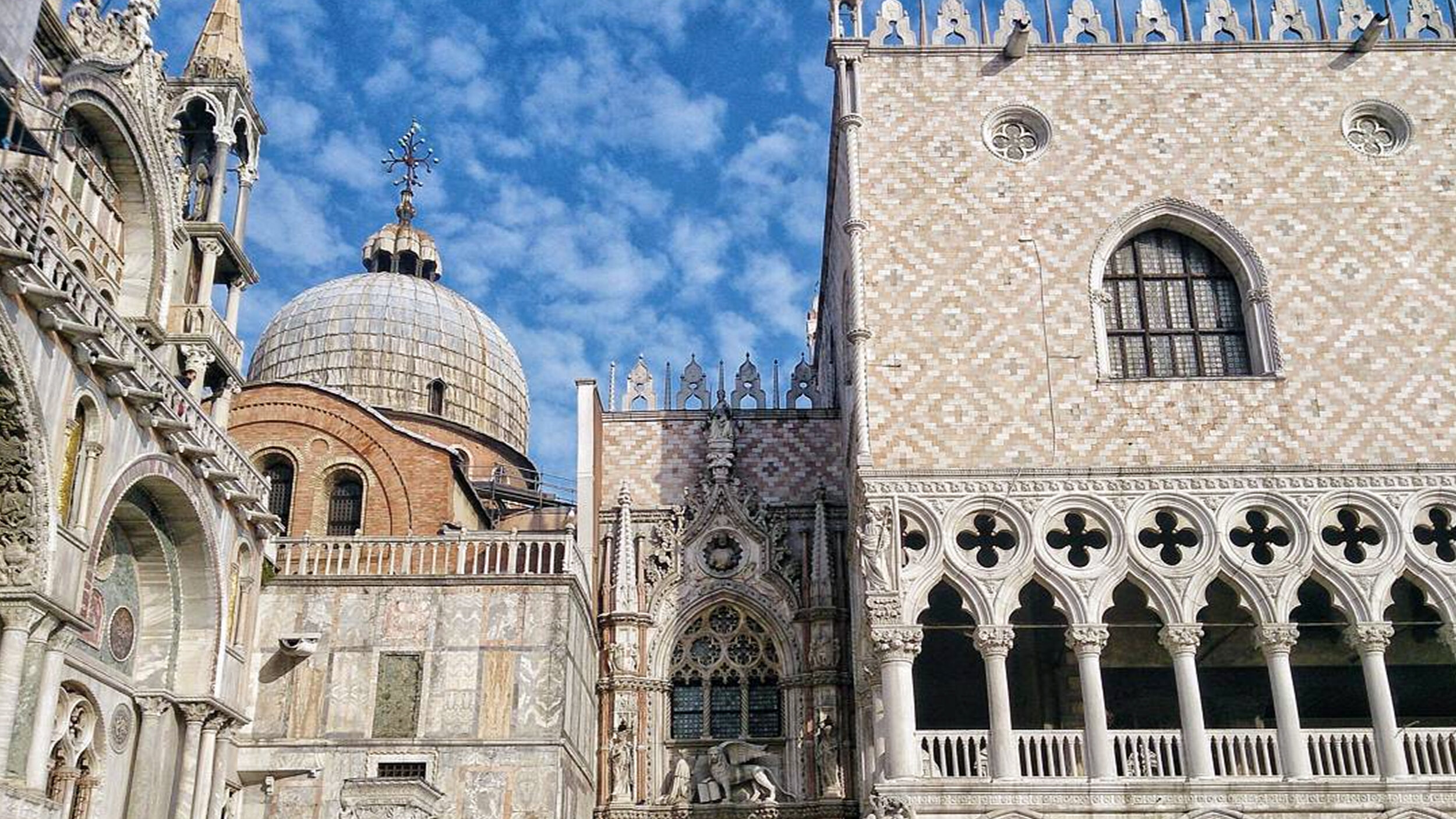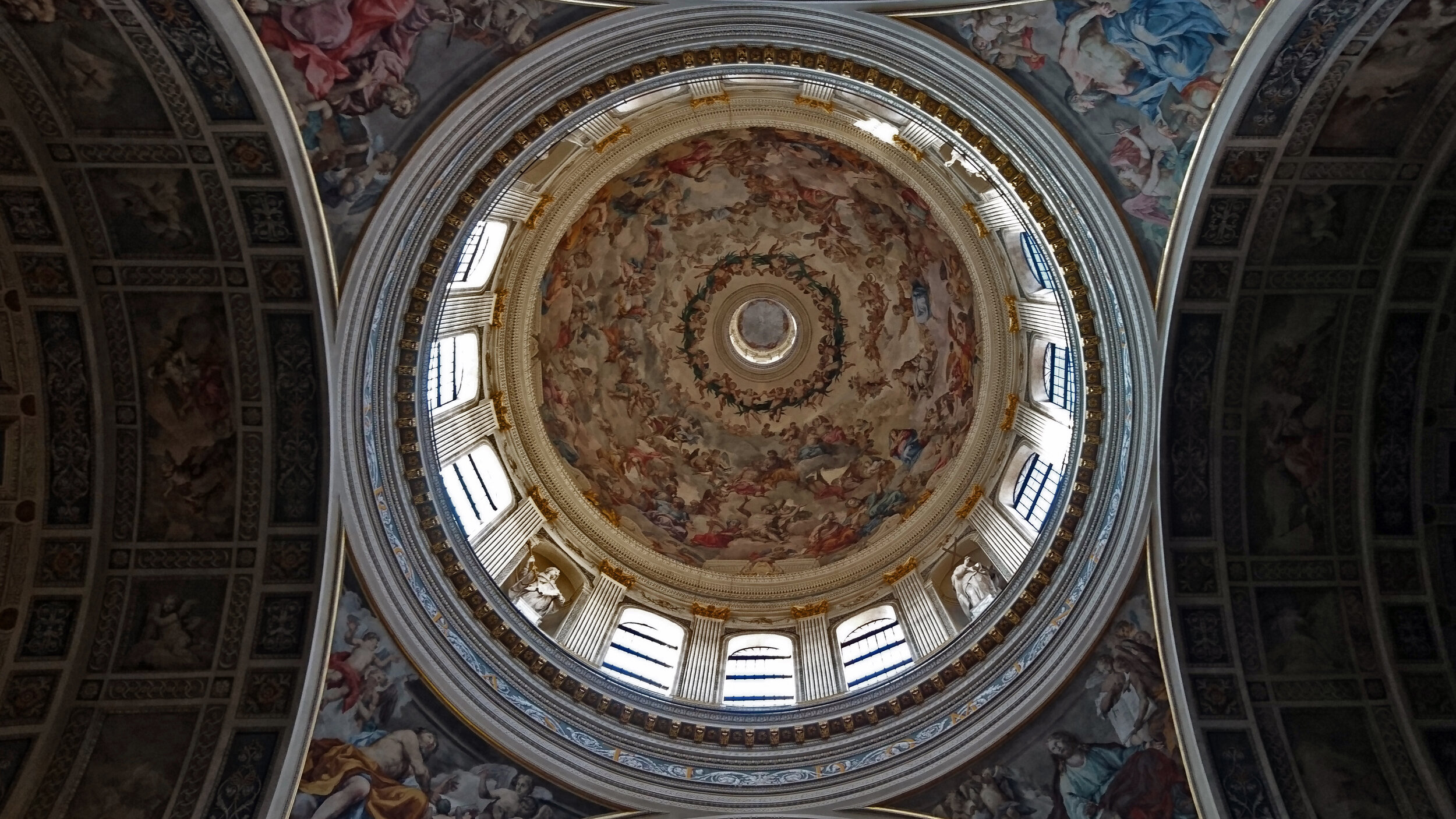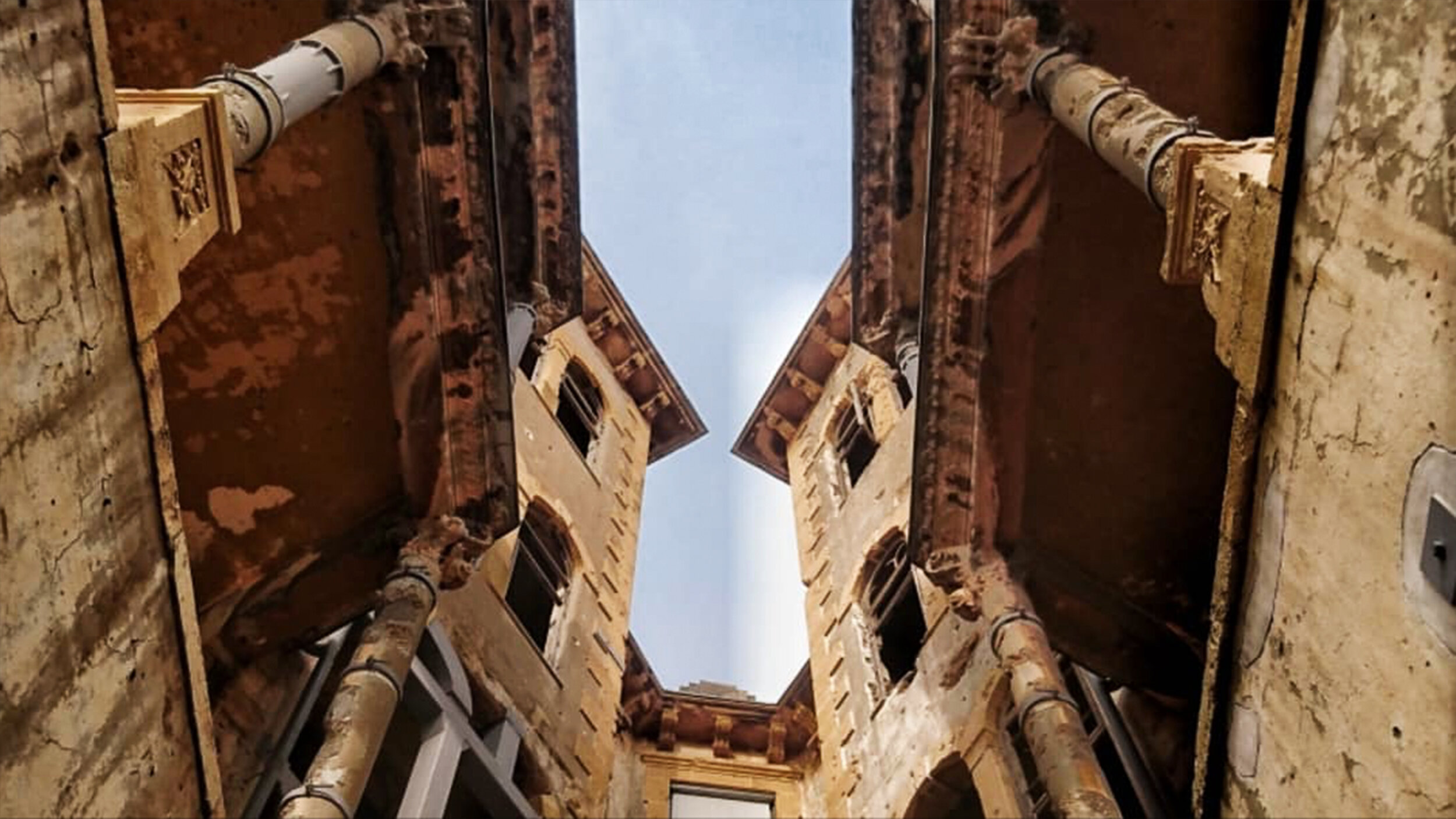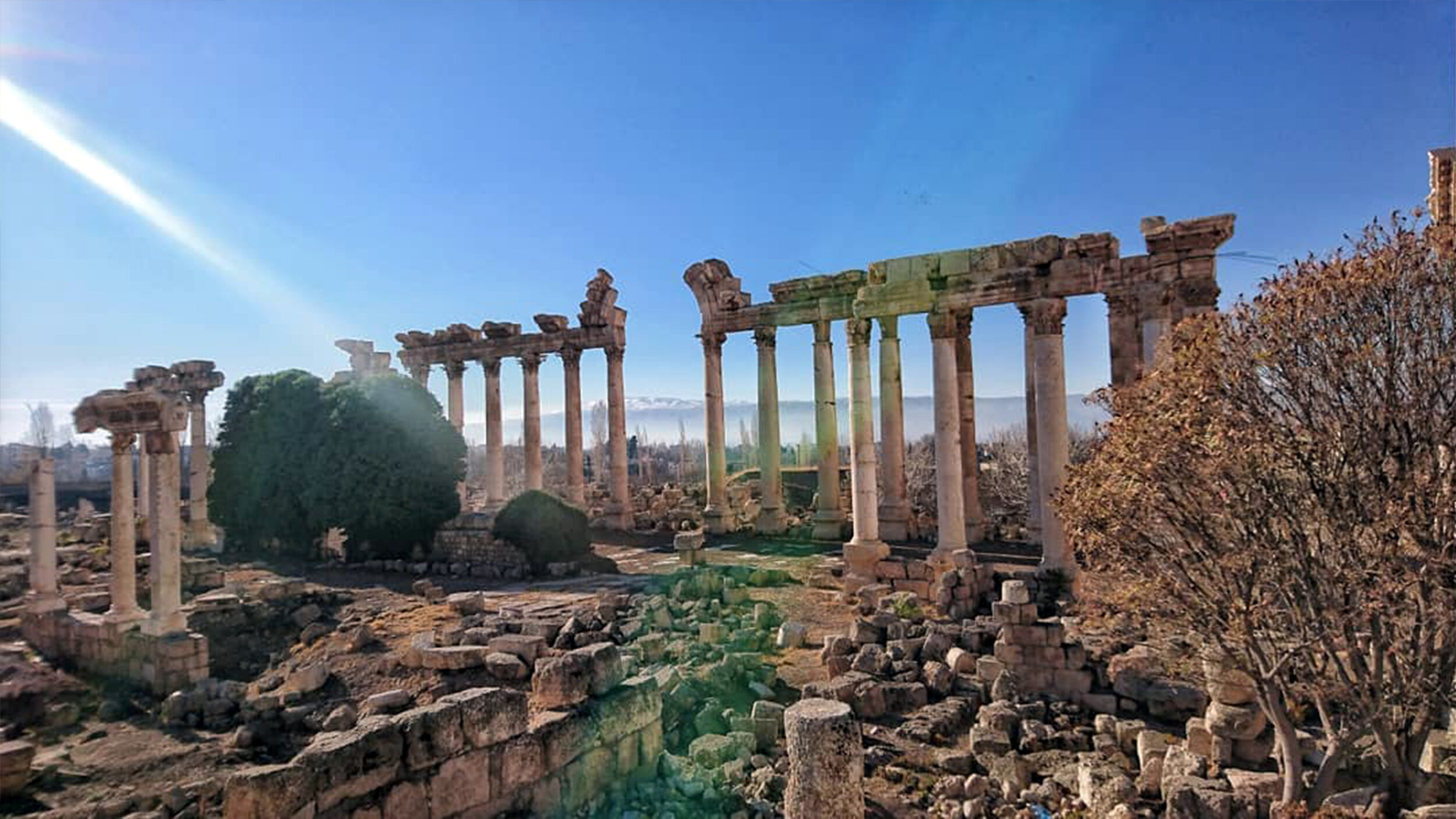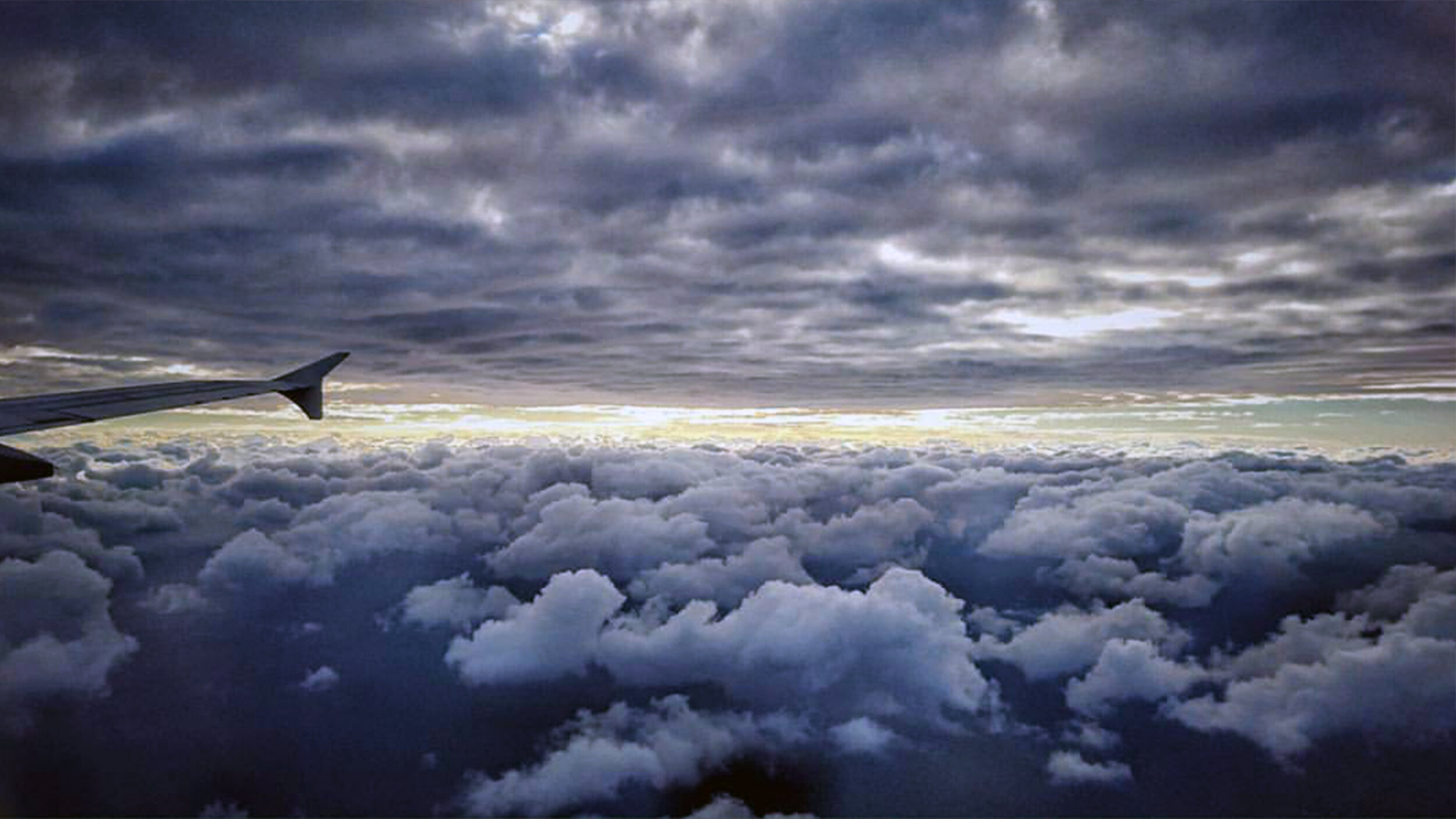SAHAR TRABOULSY
Portrait courtesy of Sahar Traboulsy.
Sahar is a Lebanese Architect with a Master’s degree in Architecture and Preservation from Politecnico di Milano. She has knowledge of multiple disciplines related to Architecture including preservation, adaptive reuse, sustainability, and urban planning. She is also passionate about photography. As an architect with a strong interest in interdisciplinary work, she believes that through the integration of different practices it is possible to provide people with a better future by reconnecting them with their society, environment, and cultural heritage. She hopes to be able to someday implement in her home country all that she has learned about Italian and European preservation and restoration approaches.
Where are you from?
Tyre, South Lebanon
What is your favorite dish?
“Mloukhiyeh”, a popular Middle Eastern dish, served with a lot of apple vinegar!
Three additional fun facts about Sahar:
I speak four languages: English, French, Arabic and Italian.
I play the piano and some guitar and like to sing acoustic song versions.
I enjoy acrylic painting and clay sculpting.
What inspired you to study architecture?
As a young girl, I always used to watch my father work in his atelier. He is a sculptor. I believe this is where I get my attention to detail from. From a young age, I could produce detailed visual representations and drawings. As I grew older, I started experimenting with colors and painting. During high school, I took painting courses. When the time arrived to pick a career path, I decided to pursue an Architecture profession since it would combine creativity with technicality and allow me to use my talent wisely to make a personal contribution to myself and my society. During my Bachelor studies, I formed a particular interest in history and preservation. I love designing new buildings. However, I find the conservation of heritage buildings to be very important. Other than discouraging the waste of resources and energy, heritage preservation protects a country’s identity and reveals its unique stories. Lebanon reveals thousands of years of history. However, Lebanese heritage has been neglected for centuries. Some buildings and archaeological sites have been either disregarded or poorly approached. When I decided to pursue a Master’s degree in Architecture and Preservation, I was hoping to gain all the appropriate knowledge in order to seek a means to preserve the cultural heritage of my country.
Palladio’s Villa “La Rotonda” in Vicenza, Italy. Image courtesy of Sahar Traboulsy.
Name a woman architect (preferably Arab or MENA) who most influenced you as an emerging professional? Why or how did they?
If I have to pick a female Arab Architect who influences me, I would pick Suad Amiry. Amiry is a Palestinian architect whom I recently discovered and whose opinions influence me as an emerging professional. She studied architecture in Beirut, Michigan and Edinburgh. She is engaged in multiple peace initiatives and is also a founder of a center for architectural conservation. One of the things that Amiry and I have in common is our admiration of Italy’s methods of protection of its cultural heritage and the disappointment in the Middle Eastern countries’ destruction of their own heritage. We both come from countries with political instability and war zones. However, other than the properties that were/ are being destroyed by war, some cultural properties are being demolished by country authorities in order to build new structures. Amiry believes that instead of destroying cities, it is better to renovate them. She believes that it is our duty to protect our heritage for future generations and I couldn’t agree more. Her designs are based on the social principles of ancient architecture where places had a human scale, unlike modern designs that only fulfill the needs of technology. She is also seeking methods to create green areas and cities that are made for people, not only cars.
View from Turin Cathedral’s Tower, Italy. Image courtesy of Sahar Traboulsy.
Name a favorite project completed by a Woman Architect (preferably Arab or MENA). Why is it your favorite?
“Messner Museum” by Zaha Hadid is one of my favorite projects completed by an Arab Woman Architect. It is part of a chain of museums in South Tyrol, Italy. It is embedded within the mountain, blending with the landscape. This architecture invites its visitors to explore the museum and admire the Alpine views. It represents a union of architecture and nature, without being too “offensive”. Even though I am against building in delicate environments, I am very much intrigued by Tourist Routes and the fascinating viewpoints that increase the attractiveness of scenic routes and highlight their beauty. My Master’s thesis project consisted of an intervention on an ancient castle and creating a path towards the ruins and observatory points, among other functions. Observation viewpoints enhance the landscape experience in certain locations with very specific coordinates and amazing sceneries, and South Tyrol is one of them. I am a big fan of outdoor activities and I love hiking and discovering unique environments and of course… stopping to take pictures. The Messner Museum experience gives you a feeling of hanging off a cliff while ironically feeling safe and enjoying the amazing view.
How does your culture/ethnicity affect your studies and the way you design?
On one hand, regarding new building projects, I believe that my Middle Eastern culture inspires me to take into consideration the future social interaction of architecture users. Arabs are extremely social by nature. As an Arab Architect, I believe that I hold the potential to create spaces for social encounters and bring people together. Arabs live in communities. While they need to have a sense of security and privacy, they also love sharing meals, activities and spaces. This is why I try to find design solutions which provide users with both: private and shared spaces. On the other hand, regarding conservation projects, I believe that it is very important to protect every single trace that is left of one’s heritage. Coming from a country rich in archaeological sites and mountain landscapes that are being destroyed as the time passes, my design goals and objectives generally consist of: preserving and not threatening the existing structures, sustaining the new buildings with eco-friendly materials, connecting the disconnected landscape fragments, revealing the structure’s hidden components and giving value to the existing architecture by highlighting it and clearly distinguishing between the “old” and the “new”.
Top left: A Fragment of Venice: Saint Mark’s Basilica, Porta della Carta and The Doge’s Palace, Italy
Top right: The Dome inside the Basilica of Sant’Andrea, Mantova, Italy
Bottom left: Beit Beirut Restored Building, Beirut, Lebanon
Bottom right: City of the Sun, Baalbek, Lebanon
Images courtesy of Sahar Traboulsy.
Are there any organizations that helped you grow in architecture? How did they help you grow?
A few months ago, after the enormous Beirut Port explosion that took place on August 4th 2020, I worked with UNDP as a volunteer in the post-blast damage assessment. The United Nations Development Program (UNDP) is one of the many UN organizations which offer humanitarian aid. Sadly, on that day, buildings within a 3km radius of the blast suffered severe damage. After the nuclear explosion, not only glass windows were shattered, but also homes, families and hearts. Working with UNDP taught me that there is a humane duty that we, as Architects have. Not only doctors can save lives… Architects can do so too. Renovating post-war buildings can heal both: the building and its inhabitants. Seeing the hopeful look and the smile on people’s faces while we assessed their house damages gave me a feeling I can’t describe. After our visit, they saw a light at the end of the tunnel. Consequently, after seeing them happy, our broken hearts were mended. I strongly believe that Architecture, in all its forms, should be for the people and not for the architects and their reputations.
What is your favorite memory in architecture school or work? Why?
Having had the opportunity to study in Italy was in itself a great experience. Architecture school basically consisted of studying, working hard, travelling around Italy, working hard again, presenting my thesis project after two and a half years, receiving a perfect reaction after my presentation and feeling grateful that all my hard work paid off. I lived in Mantova, where my university campus was. Mantova was awarded the title of “Italian Capital of Culture” at that time. This small city is known for its beautiful Renaissance architectural treasures. Each day, while walking to school, I saw something new. On weekends, I sometimes got up early, grabbed my camera, took the train and travelled to a new city. Italy is known for its significant architecture. Wherever you go, anywhere you look, you can find something so satisfying to contemplate. I also made many international friends who are still like brothers and sisters to me till this day. I consider myself lucky to have family all over the world now and to have spent almost three years in one of the most beautiful countries in the world.
The Bell Tower of Modena’s Cathedral, Italy. Image courtesy of Sahar Traboulsy.
If you were able to talk to your younger self, what would you say?
During my Bachelor studies, I was extremely detail-oriented that I wasn’t able to finish and submit all of my projects on time. I was also hesitant and didn’t go after my preliminary ideas right away. If I were able to talk to my younger self, I would tell her: Go after that idea! It’s a great one. Don’t waste your time. You’re only going to arrive at the same result. Instead, spend time developing it into an admirable and complete proposal. It is true that being detail-oriented is very important, but without time-management, you cannot accomplish your goals. We live in an unpredictable world, where anything can go wrong or right at any time. Not everything goes according to planned, but you should still prioritize your work. My time-management skills got better during my stay in Italy because I had so many things to do in so little time and I had to rethink my priorities and organize my time or else I couldn’t achieve anything. I am constantly working on improving myself more.
What would you want to say to the next generation of aspiring Arab women architects?
To the future generation of strong women architects, I would say: Unfortunately, our region is going through a tough time. We are going through emotional, mental and physical stress. Our countries are suffering medically, politically, socially and economically. Our governments are corrupt. Nevertheless, our countries need us. All young architects are immigrating, looking for safer and more stable life options abroad. I don’t believe it is wrong to take a break, to leave for a while, to study or work abroad and come back when the time is right. We can learn so much from other countries’ experiences. I hope that someday we can all step together in the right direction and help build our beautiful countries for our children. I just hope we won’t have to rebuild them from scratch.
In Between Earth and Sky. Image courtesy of Sahar Traboulsy.
In terms of rising concerns and problems (in the architectural profession) over the past year, what is one change that you wish saw would happen and still did not?
Particularly in Lebanon, because of the high unemployment rate and the tough economic situation that the country is facing, the architectural profession has become a race between architects. For instance, instead of teaming up to restore the damaged buildings after the Beirut Port blast, different professionals rushed to the site and took advantage of the situation in order to work for compensation and for their names to be recognized. Also, Architecture companies are offering very low salaries compared to the great amount of work demanded. I believe that this is a rising concern in Lebanon nowadays. Lebanese Architects are accepting any kind of job in order to earn some money and they are not the ones to blame. I hope that someday, we as Lebanese architects, will be able to enjoy our jobs as “Independent Architects”, and not “Government Compliant Architects”. Lebanon has a rich history and heritage and a diverse culture. It also has a contrasted geography, granting infinite options for architectural interventions. The architectural profession in Lebanon can be so enjoyable, rich and rewarding. I wish to see this change happen someday.
The View from Guaita Tower, Republic of San Marino. Image courtesy of Sahar Traboulsy.





